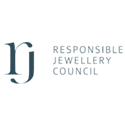In recent years, the concept of gold recycling has surged in importance within the gold industry. As the world increasingly focuses on sustainability and reducing environmental impact, the recycling of gold presents a golden opportunity to address these concerns. Unlike traditional gold mining, which involves extensive excavation and has a significant environmental footprint, gold recycling reclaims gold from various sources like electronic waste, jewelry, and industrial products, offering a more sustainable alternative.
The Gold Recycling Process
The process of gold recycling is an involved and interesting one, but preferable to mining fresh gold
The journey of gold from being a discarded item to becoming a valuable recycled asset is both fascinating and complex, embodying the principles of sustainability and innovation. Unlike the traditional gold mining process, which is labor-intensive and environmentally taxing, gold recycling offers a greener alternative that breathes new life into old gold-containing products.
Here’s how it unfolds:
Collection of Gold-Containing Materials: The first step in the recycling process involves gathering materials that contain gold. These can range from old electronic devices such as smartphones and computers, which contain gold in their circuit boards, to jewellery and dental fillings. Specialized recycling companies often launch collection drives or collaborate with waste management facilities to obtain these materials.
Sorting and Pre-processing: Once collected, the materials undergo sorting to separate gold-containing components from the rest. This stage may involve manual dismantling, especially for electronic waste, to isolate parts with gold contacts. The sorted gold-bearing materials are then prepared for further processing, which might include crushing and grinding to create a uniform mixture that can be more easily treated to extract gold.
Gold Extraction: This critical phase employs chemical or mechanical methods to extract gold from the processed materials. One common method is leaching, where a solution, typically containing cyanide, is used to dissolve gold from electronic components or other materials. For more eco-friendly alternatives, researchers and companies are exploring the use of non-toxic substances, such as a solution of thiosulfate, to reduce environmental impact.
Purification and Refining: The extracted gold is not yet pure and contains various impurities that must be removed. The purification process involves several stages, including melting and the use of chemicals like chlorine or acid baths, to refine the gold to a purity level acceptable for the market. This stage is crucial for ensuring the recycled gold meets industry standards and can be seamlessly integrated back into the supply chain.
Re-Introduction to the Market: Once purified, the recycled gold is ready to enter the market. It can be sold to jewelers, electronic manufacturers, and other industries that require high-purity gold. This completes the recycling loop, with gold that was once considered waste now ready to be transformed into new products, from elegant jewelry pieces to high-tech electronic components.
The gold recycling process not only conserves natural resources by reducing the demand for mined gold but also decreases the environmental degradation associated with traditional mining practices. By embracing recycling, the gold industry can move towards a more sustainable and environmentally friendly future, where every gram of gold is valued, not just for its inherent beauty and utility but also for the responsible manner in which it was sourced.
Deep Dive into Environmental Benefits
Reduced Soil Excavation and Water Usage
Gold mining can have a great negative effect on our rivers and water systems
One of the most significant environmental benefits of gold recycling lies in its ability to dramatically reduce the need for soil excavation. Traditional gold mining is notorious for its extensive disruption of natural landscapes, involving the removal of vast amounts of earth to access gold deposits. This process not only alters the physical terrain but also disturbs local ecosystems, affecting flora and fauna. In contrast, gold recycling circumvents this disruption by extracting gold from existing products, thereby preserving the integrity of natural habitats and biodiversity.
Moreover, the water savings associated with gold recycling are profound. Gold mining is a water-intensive process, requiring large quantities of water for ore processing and the management of waste materials. In many mining regions, this leads to significant water depletion, affecting local communities and agriculture. The contamination of water sources with mining chemicals further exacerbates environmental and health risks. Gold recycling, however, requires a fraction of the water used in mining operations. By relying on previously extracted gold, the recycling process avoids the water-intensive stages of ore extraction and processing, contributing to water conservation and reducing the industry’s water footprint.
Lower Greenhouse Gas Emissions
The emissions from Gold mining are significantly higher than that of Gold recycling
One of the most significant environmental advantages of gold recycling is the substantial reduction in greenhouse gas (GHG) emissions compared to traditional gold mining. The process of extracting gold from the earth is not only labour-intensive but also extremely energy-intensive. It involves extensive mechanical and chemical processing, including excavation, transportation, crushing, milling, and chemical treatment to extract gold from ore. Each of these steps consumes large amounts of fossil fuels, directly contributing to the carbon footprint associated with gold production.
In contrast, gold recycling harnesses the value of gold already in circulation. The energy required to recover gold from electronic waste, old jewelry, and other gold-containing materials is markedly less than that needed to mine and process raw ore. For example, recovering gold from electronic waste involves disassembling, shredding, and applying chemical treatments to extract precious metals, which, while still energy-intensive, is significantly more energy-efficient than mining. According to research, the carbon footprint of recycled gold is only a fraction of that produced by mining new gold, sometimes estimated at less than 5% of the GHG emissions associated with virgin gold production.
This stark difference in GHG emissions is crucial not only for mitigating climate change but also for companies and consumers increasingly concerned with the environmental impact of their purchases and investments. As the world moves towards a more sustainable and low-carbon economy, the role of gold recycling becomes ever more important. By opting for recycled gold, the industry and consumers can significantly reduce the overall carbon footprint of their gold use.
Furthermore, advancements in recycling technologies are continually improving the efficiency and environmental footprint of the gold recycling process. Innovations in sorting and processing are making it possible to recover gold with even lower energy inputs and GHG emissions, promising a future where gold recycling is an even more integral part of a sustainable gold industry.
Explore the Economic Impact
Stabilizing Supply and Prices
The intrinsic value of gold has made it a cornerstone of financial systems and personal investments for centuries. However, the traditional mining of gold is subject to numerous challenges, including geopolitical tensions, environmental regulations, and the finite nature of gold deposits. These factors can lead to significant volatility in gold supply and, consequently, its price. Gold recycling emerges as a pivotal solution to these challenges, offering a more stable and sustainable source of this precious metal.
Consistent Gold Supply
Gold recycling provides a consistent and reliable supply of gold, independent of mining activities. As gold is recycled from a wide range of sources — from obsolete electronics to jewelry — it creates a continuous loop of supply that is less susceptible to the disruptions often faced by the mining industry. This steady flow of recycled gold onto the market helps to buffer the supply chain against sudden shortages or geopolitical issues that can halt mining operations, ensuring that the gold industry can meet demand without excessive fluctuation in prices.
Mitigating Price Volatility
By supplementing the world’s gold supply with recycled materials, the industry can mitigate some of the price volatility associated with traditional mining. When new gold discoveries wane or mining costs increase due to deeper and more complex extraction sites, gold prices can spike, affecting investors, markets, and industries that rely on gold. Recycling helps smooth out these fluctuations by providing an additional source of gold, which can help keep prices more stable. This stability is crucial for investors who rely on gold as a safe haven asset and for manufacturers in industries like electronics and jewelry, where gold is a key component.
Economic and Environmental Synergy
The economic benefits of gold recycling are closely tied to its environmental advantages. By reducing the reliance on gold mining, which is both costly and environmentally damaging, recycling helps lower the overall cost of gold production. These savings can be passed along through the supply chain, contributing to more stable prices for consumers and industries. Furthermore, as the demand for sustainable and ethically sourced materials grows, gold recycling aligns with consumer preferences, potentially increasing demand for recycled gold and further stabilizing prices.
Supporting the Circular Economy
Gold’s role in the circular economy
Gold recycling is not just an environmentally friendly alternative to traditional gold mining; it’s a pivotal component of the circular economy, which emphasizes reducing waste, reusing resources, and recycling materials to create a more sustainable economic system. In the context of gold, this approach transforms the lifecycle of products by recovering and reusing gold, thereby minimizing the need for new mining and reducing the overall environmental footprint.
Economic Efficiencies and Job Creation
By focusing on the recovery and reuse of gold, the circular economy model creates economic efficiencies that benefit both businesses and consumers. These efficiencies can lead to reduced costs for gold products and materials, as recycled gold often requires less processing and energy to repurpose than mining and refining new gold. Furthermore, the gold recycling sector contributes to job creation, from collection and sorting to processing and resale, supporting local economies and providing new opportunities in the green economy.
New Markets and Business Models
Gold recycling encourages the development of new markets and business models centered around sustainability. Companies specializing in the collection and processing of electronic waste, for example, have grown significantly, driven by the value of the precious metals, including gold, that can be recovered. This has also led to innovative business models, such as ‘gold-for-cash’ schemes and corporate sustainability programs aimed at recovering gold from products at the end of their lifecycle.
Consumer Participation in Sustainability
Gold recycling also empowers consumers to participate in sustainability efforts. By choosing products made with recycled gold, consumers can directly contribute to reducing the demand for newly mined gold, encouraging more sustainable production practices across the industry. This consumer demand for sustainability can drive further innovation and adoption of circular economy principles within the gold sector and beyond.
Future Trends and Innovations
Technological Advancements
Gold recycling workers sorting through old electronics for gold components
Recent innovations in gold recycling technology promise to enhance the efficiency and effectiveness of gold recovery from electronic waste and other materials. Advanced sorting and processing technologies, such as those using laser-induced breakdown spectroscopy (LIBS), are improving the accuracy and speed of gold extraction, making recycling more viable and profitable.
Regulatory Changes and Sustainability Initiatives
The future of gold recycling is also shaped by regulatory changes and sustainability initiatives. Governments and international bodies are increasingly recognizing the importance of sustainable resource management. Regulations aimed at promoting recycling and reducing electronic waste can significantly impact the volume of gold recycled annually, further embedding sustainability into the gold industry’s future.
Gold recycling represents a critical shift towards a more sustainable and environmentally friendly approach to utilizing this precious metal. By understanding the environmental benefits, economic impact, and future trends in gold recycling, we can better appreciate its significance. As consumers, investors, and industry stakeholders, supporting gold recycling and sustainability initiatives is not only beneficial for the environment but also ensures the long-term viability and stability of the gold industry.
Recent articles
Gold and Geopolitics: How Global Tensions Influence Gold Prices
The Global Gold Rush: Emerging Markets in the Gold Industry
The Tech Revolution: Gold’s Role in Modern Technology















